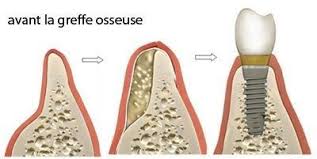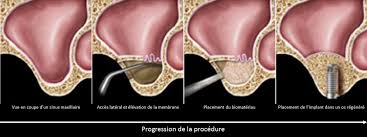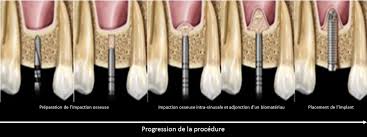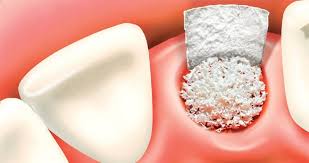Dental implants
When a tooth is lost due to an accident or a carious or periodontal problem, replacement with an implant is a very reliable option.
Bone and gum grafts
When a single tooth is missing, an implant is usually all that is needed to fill the space and restore proper functioning of the teeth.
However, if the tooth has been missing for a long period of time, the bone usually begins to show signs of atrophy.
At this point, a very detailed clinical and radiographic examination will assess whether additional bone or gum grafting is necessary.
The gum around an implant is very important. It must be of good quality and thick enough to remain stable over time and to allow easy cleaning around the implant by the patient.
The quality of the gingiva will also provide a better aesthetic integration of the implant and the implant supported crown.



The particular case of the MAXILAR SINUS
When an upper molar is extracted, we are often confronted with a lack of bone height due to the maxillary sinus located under the upper molars.
Since an implant must be completely surrounded by bone, it is necessary to move the membrane delimiting the maxillary sinus back a few millimeters before or sometimes at the same time as placing the implant in order to place a bone filler.
We call this the maxillary sinus bone graft, or sinus lift.
Two procedures exist for this type of graft, each indicated according to the height of the remaining bone and the position of the maxillary sinus.
The special case of dental extraction - bone filling
When a tooth is extracted and the bone conditions do not allow for immediate placement of an implant, it is strongly recommended to perform a bone filling of the alveolus with a bone biomaterial.
Bone filling is performed with synthetic or bovine bone biomaterial. Il comblera les espaces entre l’implant et l’os périphérique qui était présent autour de la racine de la dent extraite. This filling will maintain the initial position of the gum and bone, and stimulate bone healing. The bone filler material eventually resorbs as it is replaced by the patient’s own bone during healing.


